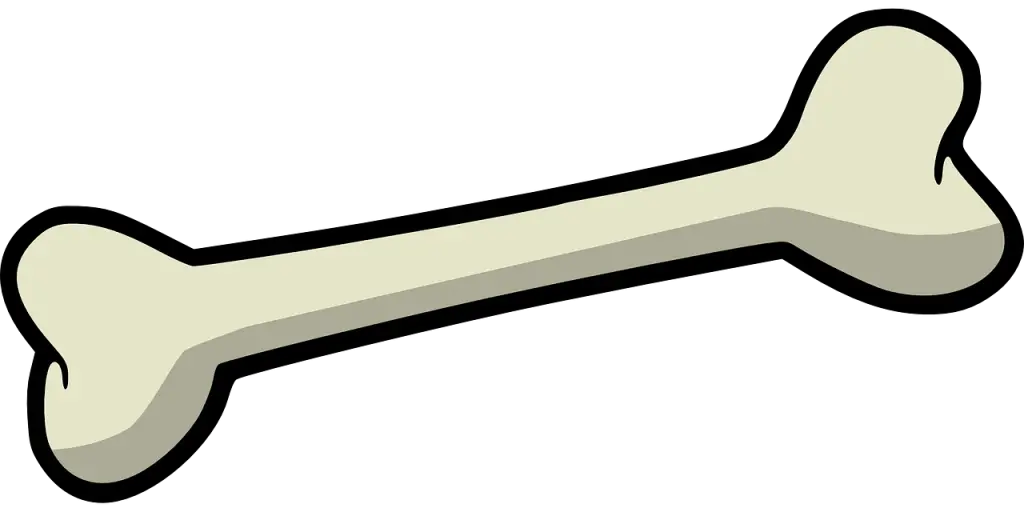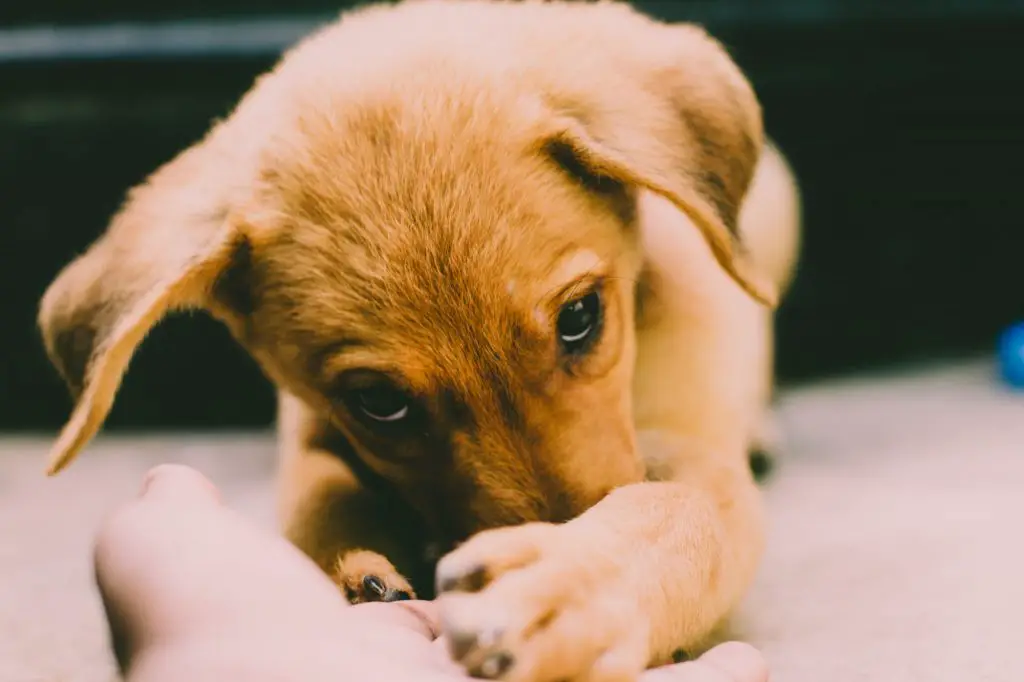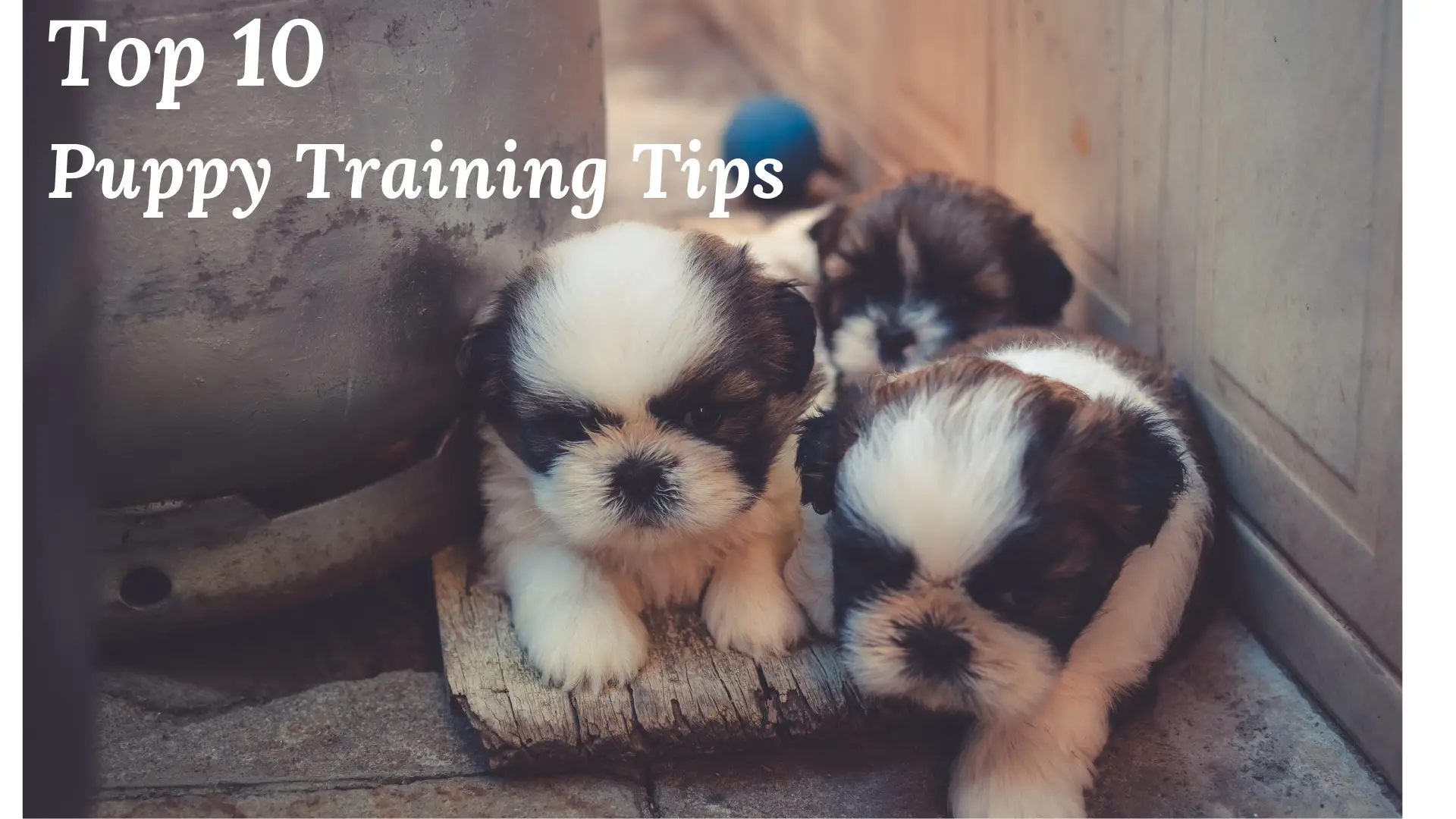Adopting a new puppy is so exciting! They are so cute and adorable, but also so messy and clueless. Today, I want to share with you the top five puppy training tips that you should know about.
Dear reader beware, for this journey is going to be so bumpy and sometimes unfair. Some of these tips will show how to shift your state of mind into a better place when everything in your home gets misplaced.
Training your puppy is totally doable, but following these tips will help make the process faster and easier. We’re not promising results that will happen overnight. Overnight success is nothing but a highly endorsed and desired hoax.

Table of Contents
Puppy training tips – It all starts with you
Before we start, I want to explain to you why you should start as soon as you adopt your lovely puppy, which usually is when they’re eight weeks old.

Think of puppy training like gymnastics. If someone wants to excel at that sport, specifically, then they have to start way early in life. The flexibility of the human body is reversely proportionally to their age.
It is true that one could always get a little bit more flexible if they stretch and do certain workout exercises. However, they’ll never reach the level of flexibility of someone who’s been practcing since they were three years old.
Now things aren’t as extreme as in gymnastics. You could totally train an adult dog, but it is going to be harder and more time consuming for both of you. Start early to bathe in glory! Let us start discussing the best puppy training tips.
1) Be patient
This is something that I mention in almost every single post I write. Patience is a virtue and the essential foundation of a well-trained puppy. Being mindful and understanding the bigger picture will make training so much easier.
Once you realize and implement mindfulness, you’ll become happier because you are choosing to go to a more zen place over getting angry over things that are out of your control.
One can develop mindfulness through meditation and yoga. A simple search on the internet will give you millions of information outlets that are only one click away.
If you plan on doing some mediating yoga, I highly recommend searching for ones by Yoga with Adriene. Some are only eight minutes long, so it very easy to squeeze in these meditation exercises throughout your super busy day.
2) The Power of Words
They say the pen is mightier than the sword, so this should show you how powerful words are. The main issue here, though, is that you and your puppy don’t speak the same language! How could two beings with different native tongues communicate verbally?
Yet it is possible! Body language and reward systems play a huge role in that, and I will tell you more about using a reward system soon. When you mix words, action, and emotion, you create a solid bridge that will help you cross the “language barrier.”
This is how puppies learn how to sit on command and only potty outside the house. It is a very powerful tool, so please don’t dismiss the power of words.
3) Use Positive Reinforcement

The reason why it is okay to start training your puppy at eight weeks is because of positive reinforcement. Perhaps training techniques were a little bit rougher back in the day, but with positive reinforcement, it is pretty safe to start training your puppy at only eight weeks old.
But what is positive reinforcement?
It is the process of teaching and training your dog by praising their good behaviors and turning a blind eye to their bad, undesired behaviors. It is a very safe and positive way to set the rules and make your puppy follow then without any form of violence or harsh punishments.
Hitting your puppy is never okay and is animal abuse!
Puppy training tips – Different types of training
1) Potty Training
Poop, the things that’ll drive you out of your mind the most when you first adopt a puppy. It is important to understand that for the first few days or weeks, it is impossible to avoid the sight of dog poop everywhere in your house.

This might be a hard pill to swallow, which is why I mentioned mindfulness before talking about potty training. Mindfulness is the water that will help you swallow this bulky, sour tasting pill.
I will give you a very quick summary of how your potty training should go. You should know how frequently you need to take your puppy out to poop. All you have to do is convert your puppy’s age in months, to how frequently they should go out to poop. A six months old puppy should go to the bathroom every six to seven hours.
If you see poop around the house, but your puppy didn’t just do it, then don’t yell at them. They won’t understand why and might get scared of you. Other tips include:
- Taking your puppy to poop at the same spot every time
- Using a trigger word and phrase just before taking them out. Remember the power of words.
- Reward your puppy with treats after they poop outside.
- Limiting your dog’s access to only certain areas in the house will reduce the mess.
- Crate training could be implemented as a form of potty training
For more information on how to potty train your puppy, read our Puppy Potty Training Tips You Probably Don’t Know blog post.
2) Crate training
It is no secret that many people view crates as a prison but for dogs. Surprisingly though, it is a handy training tool for puppies when used correctly. There are many types and sizes, but the two most recommended ones to start with are the plastic crate and the wired crate.
The plastic crate is the only type of crate allowed on planes, so if you plan on flying a lot with your puppy, then get the plastic crate. When it comes to size, you want to make sure that there is enough room for your puppy to stand and turn around.
A couple of the most important rules include:
- Never leave your puppy for more than four hours at a time.
- Having two separate four hours crate training sessions per day is not recommended.
- If done, avoid doing that again during the same week.
Crates are useful for many types of training. The top three are usually:
- Behavioral Training
- Potty training
- Travel training
To learn more about crate training and read about my personal story where I share about flying with my furry pet for the first time, then read my How to Crate Train A Dog | The Ultimate Guide.

I hope this makes your life and your puppy’s a little bit easier. Let me know if you want to see more important puppy training tips, or if you have any questions on a specific topic in the comments down below.

